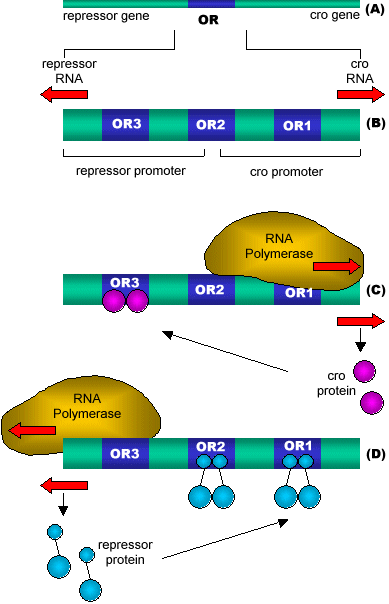 |
|
Figure 1, Genetic Switch Overview. (A) The genetic switch region of the temperate lambdoid phages (l, 434, P22). The repressor and cro genes lie on opposite sides of the operator (OR) region. (B) The repressor and cro genes are transcribed in opposite directions from their respective promoters, which overlap in the middle operator, OR2. (C) The situation in a lytic infection. Cro protein dimers occupy OR3, preventing RNA Polymerase from initiating transcription from the repressor promoter. RNA Polymerase transcribes the cro gene (and other genes), producing more of cro protein, which silences repressor transcription. (D) The situation in a lysogenic cycle. Repressor throws the genetic switch to repressor transcription and cro gene silencing. Repressor protein dimers bind OR2 and OR1, preventing RNA Polymerase from transcribing the cro gene, and promoting repressor transcription from the repressor promoter. Unlike cro, the repressor has an activation domain that promotes RNA Polymerase binding to the repressor promoter. The repressor and cro proteins have differential affinity for the operators. Repressor has lower affinity for OR3 than for OR2 and OR1, and cro has higher affinity for OR3 than OR1 and OR2. The structural bases for this differential affinity are discussed in the exhibit text. Figure modified from Brandon and Tooze (1991). Figure 2 presents the DNA sequences of operators OR1-3 from bacteriophage l and 434. |